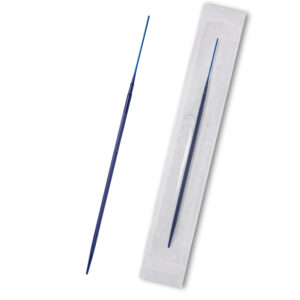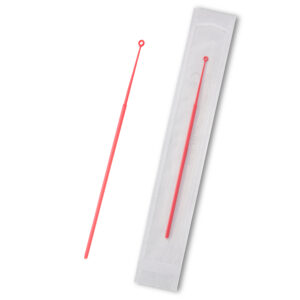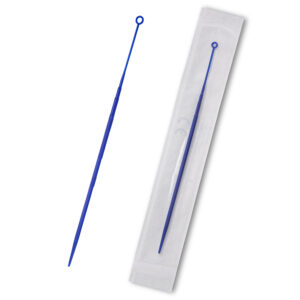Shop
Showing 79351–79400 of 163349 results
-

Innovative NitriDerm Ultra Black Powder-Free Nitrile Exam Gloves, Black, S
$79.28 Add to cart View Product DetailsInnovative NitriDerm Ultra Black Powder-Free Nitrile Exam Gloves, Black, S
-

Innovative NitriDerm Ultra Black Powder-Free Nitrile Exam Gloves, Black, XL
$79.28 Add to cart View Product DetailsInnovative NitriDerm Ultra Black Powder-Free Nitrile Exam Gloves, Black, XL
-

Innovative NitriDerm Ultra Black Powder-Free Nitrile Exam Gloves, Black, XS
$79.28 Add to cart View Product DetailsInnovative NitriDerm Ultra Black Powder-Free Nitrile Exam Gloves, Black, XS
-

Innovative NitriDerm Ultra Blue Chemo Powder-Free Nitrile Exam Gloves, 2XL
$68.15 Add to cart View Product DetailsInnovative NitriDerm Ultra Blue Chemo Powder-Free Nitrile Exam Gloves, 2XL
-

Innovative NitriDerm Ultra Blue Chemo Powder-Free Nitrile Exam Gloves, L
$68.15 Add to cart View Product DetailsInnovative NitriDerm Ultra Blue Chemo Powder-Free Nitrile Exam Gloves, L
-

Innovative NitriDerm Ultra Blue Chemo Powder-Free Nitrile Exam Gloves, M
$68.15 Add to cart View Product DetailsInnovative NitriDerm Ultra Blue Chemo Powder-Free Nitrile Exam Gloves, M
-

Innovative NitriDerm Ultra Blue Chemo Powder-Free Nitrile Exam Gloves, S
$68.15 Add to cart View Product DetailsInnovative NitriDerm Ultra Blue Chemo Powder-Free Nitrile Exam Gloves, S
-

Innovative NitriDerm Ultra Blue Chemo Powder-Free Nitrile Exam Gloves, XL
$68.15 Add to cart View Product DetailsInnovative NitriDerm Ultra Blue Chemo Powder-Free Nitrile Exam Gloves, XL
-

Innovative NitriDerm Ultra Blue Chemo Powder-Free Nitrile Exam Gloves, XS
$68.15 Add to cart View Product DetailsInnovative NitriDerm Ultra Blue Chemo Powder-Free Nitrile Exam Gloves, XS
-

Innovative NitriDerm Ultra Pro Chemo Powder-Free Nitrile Exam Gloves, Cobalt Blue, 2XL
$79.28 Add to cart View Product DetailsInnovative NitriDerm Ultra Pro Chemo Powder-Free Nitrile Exam Gloves, Cobalt Blue, 2XL
-

Innovative NitriDerm Ultra Pro Chemo Powder-Free Nitrile Exam Gloves, Cobalt Blue, L
$79.28 Add to cart View Product DetailsInnovative NitriDerm Ultra Pro Chemo Powder-Free Nitrile Exam Gloves, Cobalt Blue, L
-

Innovative NitriDerm Ultra Pro Chemo Powder-Free Nitrile Exam Gloves, Cobalt Blue, M
$79.28 Add to cart View Product DetailsInnovative NitriDerm Ultra Pro Chemo Powder-Free Nitrile Exam Gloves, Cobalt Blue, M
-

Innovative NitriDerm Ultra Pro Chemo Powder-Free Nitrile Exam Gloves, Cobalt Blue, S
$79.28 Add to cart View Product DetailsInnovative NitriDerm Ultra Pro Chemo Powder-Free Nitrile Exam Gloves, Cobalt Blue, S
-

Innovative NitriDerm Ultra Pro Chemo Powder-Free Nitrile Exam Gloves, Cobalt Blue, XL
$79.28 Add to cart View Product DetailsInnovative NitriDerm Ultra Pro Chemo Powder-Free Nitrile Exam Gloves, Cobalt Blue, XL
-

Innovative NitriDerm Ultra Pro Chemo Powder-Free Nitrile Exam Gloves, Cobalt Blue, XS
$79.28 Add to cart View Product DetailsInnovative NitriDerm Ultra Pro Chemo Powder-Free Nitrile Exam Gloves, Cobalt Blue, XS
-

Innovative Pulse Thin Powder-Free Nitrile Exam Gloves, Dark Lavender Blue, 2XL
$107.38 Add to cart View Product DetailsInnovative Pulse Thin Powder-Free Nitrile Exam Gloves, Dark Lavender Blue, 2XL
-

Innovative Pulse Thin Powder-Free Nitrile Exam Gloves, Dark Lavender Blue, L
$107.38 Add to cart View Product DetailsInnovative Pulse Thin Powder-Free Nitrile Exam Gloves, Dark Lavender Blue, L
-

Innovative Pulse Thin Powder-Free Nitrile Exam Gloves, Dark Lavender Blue, M
$107.38 Add to cart View Product DetailsInnovative Pulse Thin Powder-Free Nitrile Exam Gloves, Dark Lavender Blue, M
-

Innovative Pulse Thin Powder-Free Nitrile Exam Gloves, Dark Lavender Blue, S
$107.38 Add to cart View Product DetailsInnovative Pulse Thin Powder-Free Nitrile Exam Gloves, Dark Lavender Blue, S
-

Innovative Pulse Thin Powder-Free Nitrile Exam Gloves, Dark Lavender Blue, XL
$107.38 Add to cart View Product DetailsInnovative Pulse Thin Powder-Free Nitrile Exam Gloves, Dark Lavender Blue, XL
-

Innovative Pulse Thin Powder-Free Nitrile Exam Gloves, Dark Lavender Blue, XS
$107.38 Add to cart View Product DetailsInnovative Pulse Thin Powder-Free Nitrile Exam Gloves, Dark Lavender Blue, XS
-

Inoculating Loops, 1 uL, White, pk/30
$4.12 Add to cart View Product DetailsInoculating Loops, 1 uL, White, pk/30
-

Inoculating Loops, 10 uL, Blue, pk/30
$4.20 Add to cart View Product DetailsInoculating Loops, 10 uL, Blue, pk/30
-

Inoculating loops, 10µL, flexible PP, 50 sterile peel bags of 20 loops, 1000/pk
$120.73 Add to cart View Product DetailsInoculating needles, rigid PS, sterile, individually wrapped, 1000/cs
-

Inoculating loops, 10µL, flexible PP, sterile, individually wrapped, 1000/cs
$50.58 Add to cart View Product DetailsInoculating loops, 5µL, flexible PP, 50 sterile peel bags of 20 loops, 1000/pk
-

Inoculating loops, 10µL, rigid PS, 50 sterile peel bags of 20 loops, 1000/pk
$120.73 Add to cart View Product DetailsInoculating loops, 5µL, flexible PP, sterile, individually wrapped, 1000/cs
-

Inoculating loops, 10µL, rigid PS, sterile, individually wrapped, 1000/cs
$61.38 Add to cart View Product DetailsSpreader, L-Shape, 38 x 156mm, individually wrapped, 500/cs
-

Inoculating loops, 1µL, flexible PP, 50 sterile peel bags of 20 loops, 1000/pk
$120.73 Add to cart View Product DetailsInoculating loops, 10µL, flexible PP, sterile, individually wrapped, 1000/cs
-

Inoculating loops, 1µL, flexible PP, sterile, individually wrapped, 1000/cs
$53.69 Add to cart View Product DetailsInoculating loops, 10µL, rigid PS, 50 sterile peel bags of 20 loops, 1000/pk
-

Inoculating loops, 1µL, rigid PS, 50 sterile peel bags of 20 loops, 1000/pk
$120.73 Add to cart View Product DetailsInoculating loops, 10µL, rigid PS, sterile, individually wrapped, 1000/cs
-

Inoculating loops, 1µL, rigid PS, sterile, individually wrapped, 1000/cs
$50.58 Add to cart View Product DetailsInoculating needles, rigid PS, 50 sterile peel bags of 20 needles, 1000/pk
-

Inoculating loops, 5µL, flexible PP, 50 sterile peel bags of 20 loops, 1000/pk
$55.53 Add to cart View Product DetailsSpreader, T-Shape, 34 x 140mm, 50 sterile peel bags of 10 spreaders, 500/pk
-

Inoculating loops, 5µL, flexible PP, sterile, individually wrapped, 1000/cs
$51.15 Add to cart View Product DetailsSpreader Triangle, 60 x 235mm, 10 sterile peel bags of 10 spreaders, 100/pk
-

Inoculating Needle, Bulk Pack, Yellow, 221mm, Sterile
$125.35 Add to cart View Product DetailsInoculating Needle, Bulk Pack, Yellow, 221mm, Sterile
-

Inoculating Needle, White, Individually Wrapped, sterile 400/pk, 4000/cs
$328.92 Add to cart View Product DetailsInoculating Needle, White, Individually Wrapped, sterile 400/pk, 4000/cs
-

Inoculating Needle/Loops 10uL Flexible, Sterile pk1000, Blue
$53.87 Add to cart View Product Details* Use loop end to uniformly streak a gel surface
* Use needle end for removal of colonies
* Choose between flexible polypropylene or the more rigid ABS versions
* Lot-to-lot traceability -

Inoculating Needle/Loops 10uL Flexible, Sterile pk1000, Blue
$51.20 Add to cart View Product Details* Use loop end to uniformly streak a gel surface
* Use needle end for removal of colonies
* Choose between flexible polypropylene or the more rigid ABS versions
* Lot-to-lot traceability -

Inoculating Needle/Loops 10uL Rigid, Sterile pk1000, Blue
$53.87 Add to cart View Product Details* Use loop end to uniformly streak a gel surface
* Use needle end for removal of colonies
* Choose between flexible polypropylene or the more rigid ABS versions
* Lot-to-lot traceability -

Inoculating Needle/Loops 10uL Rigid, Sterile pk1000, Blue
$51.20 Add to cart View Product Details* Use loop end to uniformly streak a gel surface
* Use needle end for removal of colonies
* Choose between flexible polypropylene or the more rigid ABS versions
* Lot-to-lot traceability -

Inoculating Needle/Loops 1uL Flexible, Sterile pk1000, Blue
$53.87 Add to cart View Product Details* Use loop end to uniformly streak a gel surface
* Use needle end for removal of colonies
* Choose between flexible polypropylene or the more rigid ABS versions
* Lot-to-lot traceability -

Inoculating Needle/Loops 1uL Flexible, Sterile pk1000, Blue
$51.20 Add to cart View Product Details* Use loop end to uniformly streak a gel surface
* Use needle end for removal of colonies
* Choose between flexible polypropylene or the more rigid ABS versions
* Lot-to-lot traceability -

Inoculating Needle/Loops 1uL Rigid, Sterile pk1000, Blue
$53.87 Add to cart View Product Details* Use loop end to uniformly streak a gel surface
* Use needle end for removal of colonies
* Choose between flexible polypropylene or the more rigid ABS versions
* Lot-to-lot traceability -

Inoculating Needle/Loops 1uL Rigid, Sterile pk1000, Blue
$51.20 Add to cart View Product Details* Use loop end to uniformly streak a gel surface
* Use needle end for removal of colonies
* Choose between flexible polypropylene or the more rigid ABS versions
* Lot-to-lot traceability -

Inoculating needles, rigid PS, 50 sterile peel bags of 20 needles, 1000/pk
$50.72 Add to cart View Product DetailsSpreader, L-Shape, 38 x 156mm, 50 sterile peel bags of 10 spreaders, 500/pk
-

Inoculating needles, rigid PS, sterile, individually wrapped, 1000/cs
$65.77 Add to cart View Product DetailsSpreader, T-Shape, 34 x 140mm, individually wrapped, 500/cs
-

Inoculation loop, 10uL, yellow
$93.90 Add to cart View Product Details1/zipper closure bag, STR, cert.
-

Inoculation loop, 10uL, yellow
$78.49 Add to cart View Product Details10/zipper closure bag, STR, cert.
-

Inoculation loop, 10uL, yellow
$67.97 Add to cart View Product Details25/zipper closure bag, STR, cert.
-

Inoculation loop, 1uL, blue,
$93.90 Add to cart View Product Details1/zipper closure bag, STR, cert.
-

Inoculation loop, 1uL, blue,
$78.49 Add to cart View Product Details10/zipper closure bag, STR, cert.






